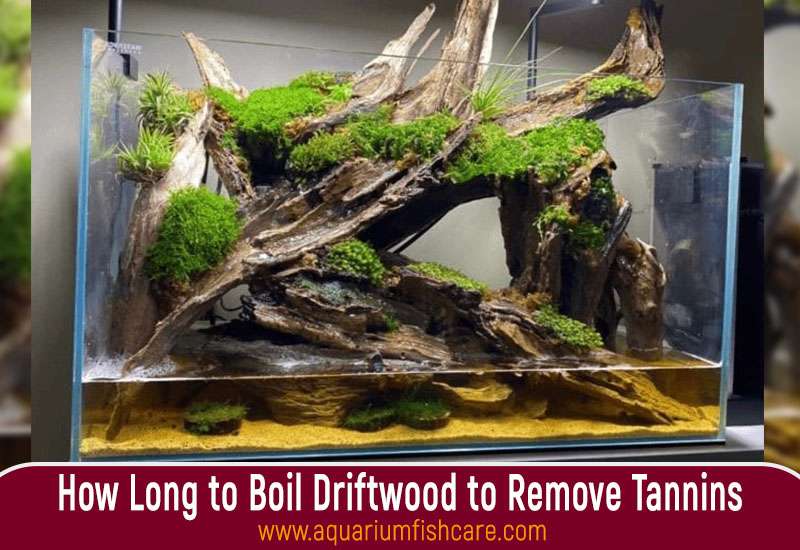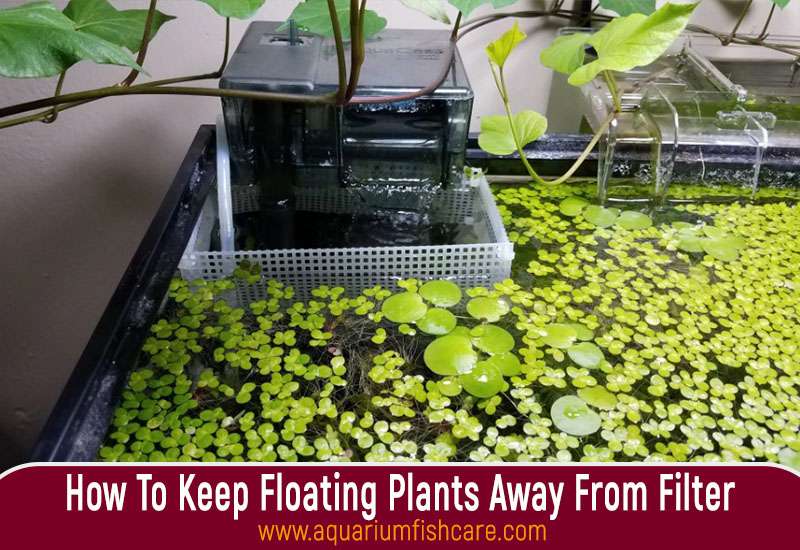How Long to Boil Driftwood to Remove Tannins: Boil driftwood for 1-2 hours to remove tannins. Boiling helps reduce tannins before aquarium use.
Driftwood is a popular addition to aquariums, providing a natural and aesthetic habitat for fish and plants. However, it often contains tannins, which can discolor the water and lower the pH. To remove these tannins, many aquarists choose to boil the driftwood before adding it to their tanks.
Boiling the driftwood for 1-2 hours can significantly reduce tannins before placing it in the aquarium, effectively minimizing the impact on water quality and appearance. While the exact timing can vary, boiling is an essential step in preparing driftwood for use in an aquarium environment, ensuring a healthier and more visually appealing habitat for aquatic life. Understanding the process and benefits of boiling driftwood can help aquarists create a more optimal environment for their aquarium inhabitants.

Boiling Driftwood
Benefits Of Boiling
Boiling driftwood helps remove tannins that can discolor aquarium water and is essential for fish health.
Duration For Tannin Removal
- Preparation: Pre-soak driftwood in hot water for a few hours.
- Process: Repeat until the wood loses most tannins.
- Leaching: Tannins may leach for a few weeks to months.
Preparing Driftwood
To remove tannins from driftwood, boiling it for around 1-2 hours effectively cleanses the wood before aquarium use. This process helps eliminate tannins and prepare the driftwood for aquatic environments by soaking it in hot water.
Types And Sizes Of Driftwood
Driftwood comes in various types and sizes, each with its unique characteristics. It’s important to choose the right type and size for your aquarium to ensure a natural and aesthetically pleasing look.
| Type | Description |
|---|---|
| Manzanita | This type of driftwood is known for its intricate branches and reddish-brown color. It provides a striking visual appeal and creates a natural habitat for fish. |
| Mopani | Mopani driftwood features a distinct texture and dark brown color. It releases tannins slowly, making it a popular choice for aquariums. |
| Grapevine | Grapevine driftwood has a twisted and gnarled appearance, adding a unique and captivating element to your aquarium. It is also great for creating hiding spots for your aquatic pets. |
When selecting driftwood, consider the size as well. Smaller pieces can be used as centerpieces or focal points, while larger driftwood can serve as the main structure or create caves and hiding spaces for your aquatic inhabitants.
Alternative Cleaning Methods
If you don’t have the time to boil driftwood or simply prefer alternative methods, there are a few options you can explore.
- Soaking in Hot Water: Pre-soaking driftwood in hot water for a few hours can help remove a significant amount of tannins before placing it in your aquarium. Repeat this process several times until the wood has lost the majority of its tannins.
- Using Hydrogen Peroxide: Another method is soaking the driftwood in a mixture of water and hydrogen peroxide. This can help to sanitize the wood and remove tannins. However, be sure to rinse the driftwood thoroughly before introducing it to your aquarium.
- Boiling and Soaking: If you’re looking for a more thorough cleaning process without actually boiling the driftwood, you can combine both methods. First, soak the driftwood in hot water, then proceed to soak it in a mixture of water and hydrogen peroxide.
Remember, regardless of the cleaning method you choose, it’s crucial to thoroughly rinse the driftwood before adding it to your aquarium. This ensures that any remaining traces of tannins or cleaning agents are removed, preventing any harm to your aquatic ecosystem. By preparing the driftwood properly and selecting the right cleaning method, you can enjoy the beauty of driftwood in your aquarium without worrying about excessive tannins.

Expert Tips
When it comes to preparing driftwood for your aquarium, there are a few expert tips that can help you effectively remove tannins and ensure the wood is safe for your fish.
Pre-soaking Technique
One effective technique to remove tannins from driftwood is pre-soaking it in hot water for a few hours. This allows the tannins to be released in the water before placing the wood into your aquarium. Repeat the process several times until the wood has lost the majority of its tannins.
Use Of Hydrogen Peroxide
Another method to remove tannins from driftwood is by using hydrogen peroxide. Soak the driftwood in a solution of one part hydrogen peroxide and three parts water for a few hours. This will help to further neutralize the tannins and ensure a clean and safe environment for your fish.
Remember, boiling driftwood is not always necessary and can depend on your aesthetic preferences. If you prefer a natural look with the tannins, a quick rinse under hot water may be sufficient. However, for tanks where you do not want a tannin look, boiling can help to remove some of the tannins.
Dealing With Leaching Tannins
To remove tannins from driftwood, soak it in hot water for a few hours before placing it in your aquarium. Repeat the process if needed until the majority of tannins are removed. Boiling is not necessary but can help speed up the process.
Timeline For Tannin Leaching
Driftwood leaches tannins into aquarium water over time, typically lasting several weeks to a few months.
Strategies To Manage Tannins
Utilize the following techniques to control tannin levels effectively:
- Boil the driftwood for 1-2 hours
- Pre-soak the driftwood in hot water for several hours to reduce tannins
- Repeat the soaking process until tannins are minimized
- Allow natural water changes to gradually remove remaining tannins
Community Experiences
User Experiences
Many aquarists have shared their experiences with boiling driftwood to remove tannins in aquarium forums and social media groups, offering valuable insights for those dealing with similar issues.
Forum Discussions
Forum discussions have been vibrant with users discussing the length of time required to effectively remove tannins from driftwood and sharing their methods for achieving optimal results.
Frequently Asked Questions Of How Long To Boil Driftwood To Remove Tannins
How Long Do You Have To Boil Driftwood?
To remove tannins from driftwood, pre-soak it in hot water for a few hours before placing it in your aquarium. Repeat the process several times until most of the tannins are gone. Boiling is not necessary, but it can help speed up the process.
How Do You Get Tannins Out Of Driftwood?
Soak driftwood in hot water for a few hours to remove tannins before adding to the aquarium. Repeat as needed until tannins are reduced.
What Happens If You Don’t Boil Driftwood?
Boiling driftwood removes tannins, but not boiling it won’t harm your aquarium.
How Long Will Driftwood Leach Tannins?
Driftwood can leach tannins for a few weeks to a couple of months. Soaking and rinsing for a few weeks can help reduce leaching.
How Long Do You Have To Boil Driftwood?
To effectively remove tannins, boil driftwood for 1-2 hours, then soak to prevent discoloration.
How To Remove Tannins From Driftwood?
Pre-soak driftwood in hot water to reduce tannins before placing it in the aquarium.
Is Boiling Driftwood Essential For Aquarium Use?
Boiling isn’t necessary; rinsing under hot water is sufficient. Tannins add benefits to tanks.
Conclusion
After learning the process of boiling driftwood to remove tannins, you can now confidently prepare your aquarium. Remember to be patient while soaking and repeating the process for optimal results. Your aquatic environment will benefit from the effort in the long run.
Happy fish keeping!


